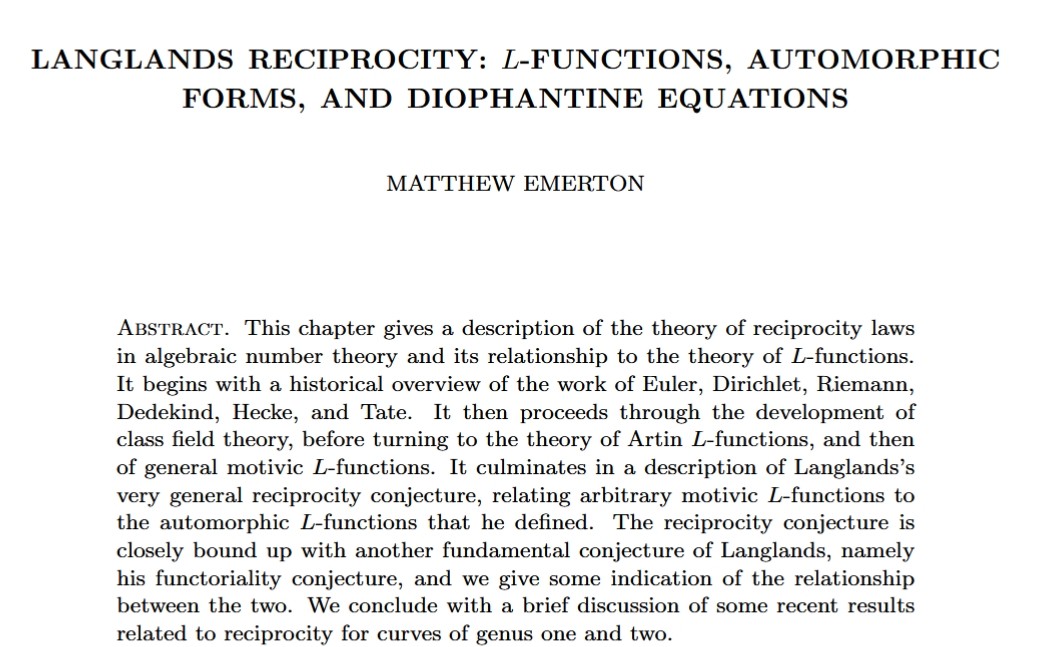John Carlos Baez on Nostr: So the big questions are: what's a 'motivic L-function' and what's an 'automorphic ...
So the big questions are: what's a 'motivic L-function' and what's an 'automorphic L-function'?
I said an L-function amounts to a list of numbers that contains information about a mathematical object. But not just any old object: it has to be a special sort of thing coming from number theory or algebraic geometry. A motivic L-function comes from something called a 'motive', while an automorphic L-function comes from an 'automorphic representation'.
So, to make progress on understanding the Langlands program, it helps to figure out what the hell 'motives' and 'automorphic representations' are.
Near the end of that video I showed you, Andreas Holmstrom, recommends this paper by Matthew Emerton:
• Langlands reciprocity: L-functions, automorphic forms, and Diophantine equations, https://math.uchicago.edu/~emerton/pdffiles/reciprocity.pdf
Emerton really helped me when I was trying to understand motivic L-functions, so I find it hilarious that Holmstrom says roughly "If you were going to be stuck on an deserted island, and you could only bring one person with you, and you didn't care about love or friendship or survival, only learning about the Langlands program, who should you bring? Matthew Emerton!"
This paper takes a historical approach. That motivates the Langlands program very well. But the complex winding course of history makes it hard to pick out a clean modern statement of (some tiny chunk of) what the Langlands program is trying to accomplish. In particular, while I understand motives and their L-functions pretty well from a couple years of study, I'm still quite fuzzy about automorphic representations and *their* L-functions. So I will need to put extra work into those.
(2/3)

I said an L-function amounts to a list of numbers that contains information about a mathematical object. But not just any old object: it has to be a special sort of thing coming from number theory or algebraic geometry. A motivic L-function comes from something called a 'motive', while an automorphic L-function comes from an 'automorphic representation'.
So, to make progress on understanding the Langlands program, it helps to figure out what the hell 'motives' and 'automorphic representations' are.
Near the end of that video I showed you, Andreas Holmstrom, recommends this paper by Matthew Emerton:
• Langlands reciprocity: L-functions, automorphic forms, and Diophantine equations, https://math.uchicago.edu/~emerton/pdffiles/reciprocity.pdf
Emerton really helped me when I was trying to understand motivic L-functions, so I find it hilarious that Holmstrom says roughly "If you were going to be stuck on an deserted island, and you could only bring one person with you, and you didn't care about love or friendship or survival, only learning about the Langlands program, who should you bring? Matthew Emerton!"
This paper takes a historical approach. That motivates the Langlands program very well. But the complex winding course of history makes it hard to pick out a clean modern statement of (some tiny chunk of) what the Langlands program is trying to accomplish. In particular, while I understand motives and their L-functions pretty well from a couple years of study, I'm still quite fuzzy about automorphic representations and *their* L-functions. So I will need to put extra work into those.
(2/3)
